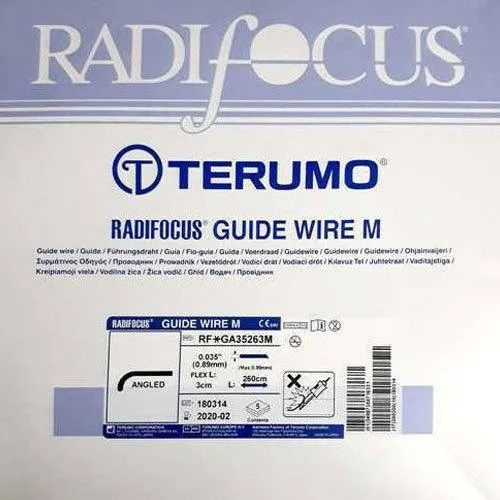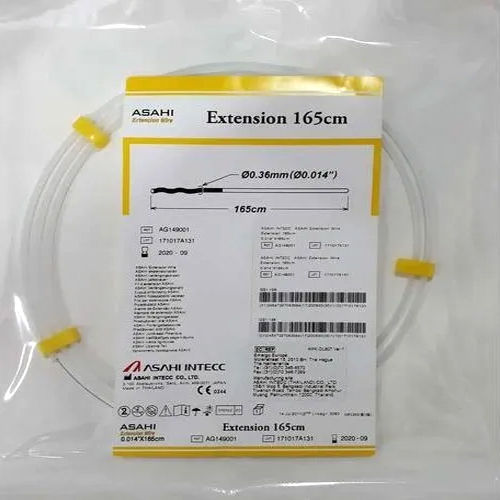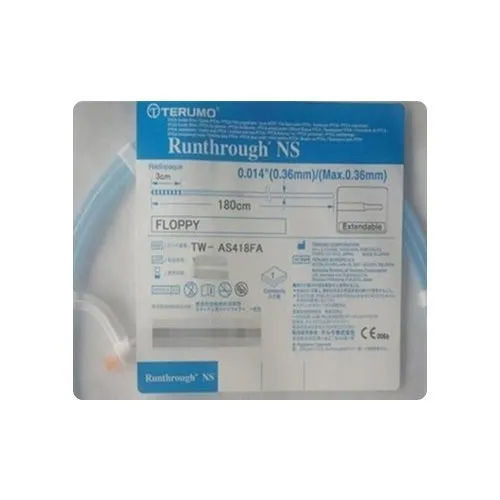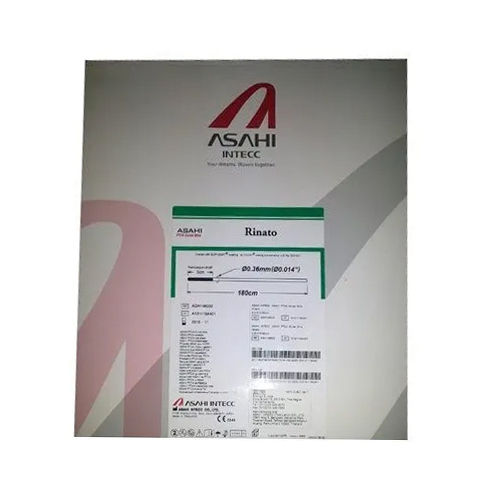Terumo Runthrough NS Hypercoat Guide Wire
Product Details:
Terumo Runthrough NS Hypercoat Guide Wire Price And Quantity
- 50 Piece
- 4800 INR/Piece
Terumo Runthrough NS Hypercoat Guide Wire Trade Information
- 10000 Piece Per Week
- 4 Days
Product Description
Terumos runthrough NS hypercoat guide wire is made for use in various interventional procedures. It has an atraumatic, softer tip for greater patient comfort and a hydrophilic coating for easier navigation through challenging locations. For better visualisation during procedures, our offering also has a radiopaque marking. It is a superb option for interventional treatments when precision navigation and patient comfort are of the utmost importance. During CVC insertions, the catheter is guided into position by theterumo'srunthrough NS hypercoat guide wire. The provided tool is used to access the blood vessels with a minimally invasive procedure.
Product details
|
Diameter |
0.014" |
|
Tip Shape |
Straight |
|
Length |
180 cm |
|
Brand |
Terumo |
|
Tip Radiopacity |
3 cm |
|
Material |
PTCA |
|
Disposables |
Yes |
|
Automation Grade |
Manual |
|
Packing Type |
Packet |
Frequently Asked Questions
Q: What is the NS Hypercoat Terumo Runthrough Guide Wire?
A: Interventional cardiology and radiology procedures use the Terumo Runthrough NS Hypercoat Guide Wire. It is a flexible wire that is put into the body during procedures like angioplasty or stenting to direct the placement of different medical devices, such as catheters or stents.
Q: What does the Terumo Runthrough NS Hypercoat Guide Wire serve to accomplish?
A: A passage across blood vessels is created by the Terumo Runthrough NS Hypercoat Guide Wire, allowing other medical devices to reach the intended place. It aids doctors in gaining access to and treating blood vessels that are blocked or constricting, mainly in the coronary and peripheral arteries.
Q: What is the application of the Terumo Runthrough NS Hypercoat Guide Wire?
A: Other interventional tools, such as catheters or stents, are used in conjunction with the Terumo Runthrough NS Hypercoat Guide Wire. The wire is introduced through a puncture site, usually in the groyne or wrist, into a peripheral or coronary artery. The doctor then inserts the wire into the blood vessels, directing its location with the aid of fluoroscopy or another imaging method. A balloon catheter or stent, for example, can be inserted over the guide wire once it has arrived at the target site to carry out the required therapy.
Q: The Terumo Runthrough NS Hypercoat Guide Wire: Are there any warnings or contraindications?
A: The Terumo Runthrough NS Hypercoat Guide Wire is generally regarded as safe and effective, however, there are some safety issues and limitations to take into account. These may consist of:
- Proper Training: Only qualified healthcare personnel who are knowledgeable about the guide wire's indications, handling, and potential issues should use it.
- Patient Conditions: Before employing the guide wire, certain patient conditions, such as severe vascular disease or arterial anomalies, may need to be carefully considered and evaluated.
- Allergic Reactions: People who are known to be allergic to the components used to make the guide wire should stay away from using it.







